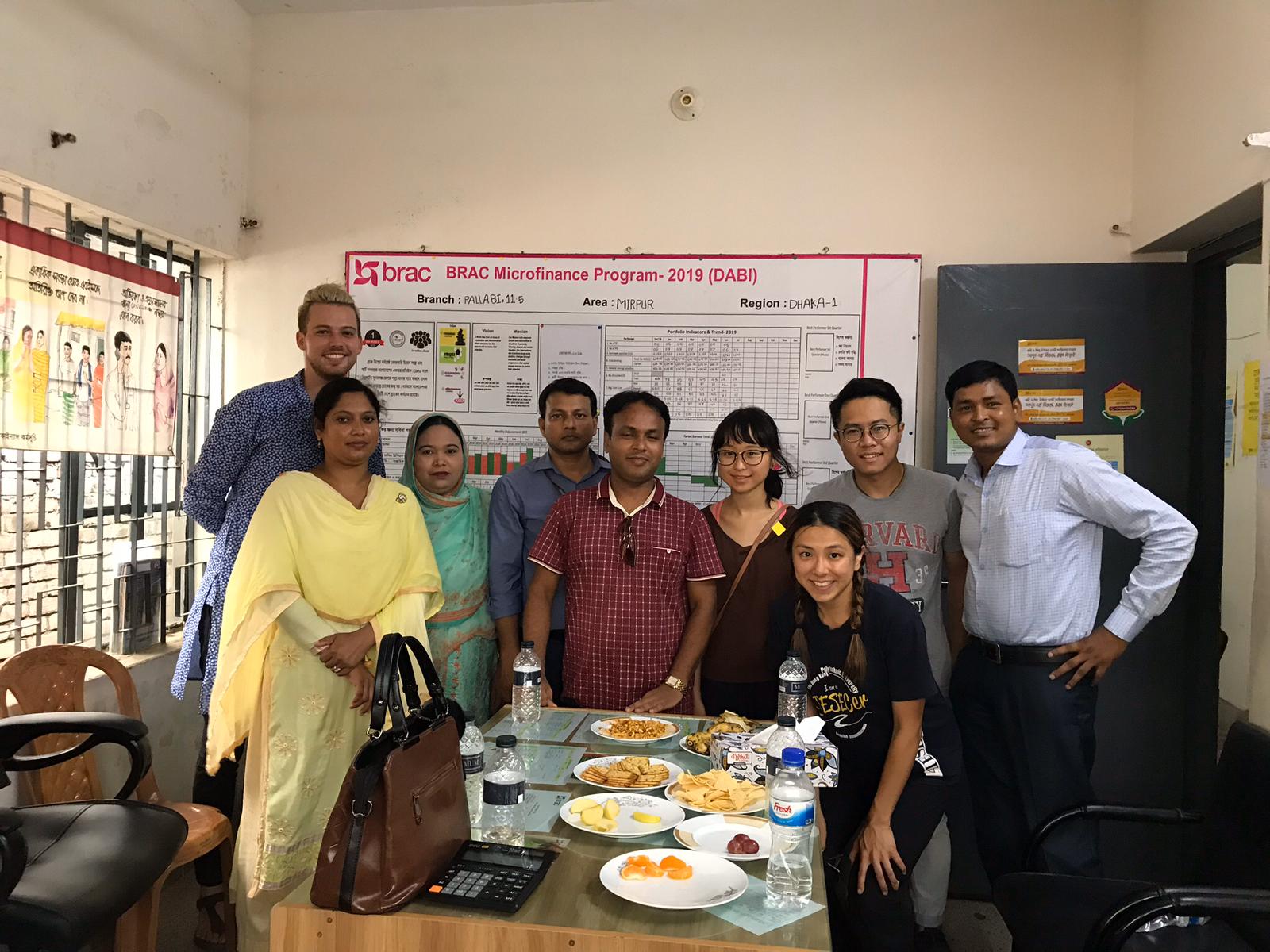Is Microfinance the Answer to Rural Poverty Alleviation? Team Investigates the Reality and Challenges of the Banking Service
Contributed by Cedric Leung (International Business and Chinese Enterprise, Class of 2016)

Positioned as an enabler in sustainable development goals proposed by the United Nations, financial inclusion refers to the process of providing financial services and products to the underserved. A key figure in the area is Prof. Muhammad Yunus from Bangladesh, who received the Nobel Peace Prize for successfully promoting microfinance through Grameen Bank, one of the largest microfinance institutions (MFIs) in the world. Whilst microfinance is being lauded for enabling the underprivileged to gain access to financial services and alleviating poverty, media outlets revealed multiple stories of harassment on borrowers (mostly women and underprivileged people) who were unable to repay the high-interest loans.
To better understand the contextual factors and the interactions of different players within the microfinance ecosystem, our team self-initiated a week-long trip to Dhaka, Bangladesh to interview staff members from BRAC (an NGO) and Grameen Bank, as well as beneficiaries of microfinance such as local villagers and small enterprises. Reminiscing on our experience, we have the following reflections.
Variabilities can be found in interest rates setting, loan governance and monitoring, and bad debt management.
From what we have observed, there is no mutually-agreed ceiling to what interest rates microcredit providers can charge. Large MFIs such as BRAC and Grameen Bank offer microloans with varying interest rates, while some MFIs are offering upon what is considered as loan-sharking (i.e. unusually high-interest rates).
Given the target audience of microfinance doesn’t usually have official credit records, “Know Your Customer (KYC)” (client investigation process pre-onboarding) and loans monitoring become crucial yet challenging functions for microfinance institutions. Well-established MFIs like Grameen Bank leverages on their long-standing relationships with local communities to run background checks on borrowers. Loans monitoring is done through unannounced visits at borrowers’ homes by staff members from different levels of seniority to ensure that borrowers maintain good financial health throughout the loan cycle and use the loan proceeds as declared on their loan applications. However, without the same operation scale as Grameen Bank, KYC and loans monitoring standards of many smaller microcredit providers deviate due to limited resources. Villagers may have taken upon loans that they cannot repay, driving them further into destitution.
Finally, the policies on treatments towards non-repayments remain much varied. While some MFIs like Grameen Bank automatically write off a loan if the borrower misses repayments for a few consecutive periods, some organisations like BRAC would allow borrower groups to handle the bad debt together, and some force the seizure of assets or allow brute force to coerce borrowers into submission. Against a backdrop of insufficient institutional governance to ensure fair treatment of borrowers, these organisations can easily get away with rough justice. All these uncontrolled variabilities have created headroom for unscrupulous businessmen to exploit the underprivileged in the name of microfinance.
Though the concept is highly disputed, we did witness women securing more opportunities to start and expand their businesses, which conceivably increases their capital as well as bargaining power in the family. Confidently, with an elevated wellbeing and status for women, the patriarchal power structure will gradually be transformed. Many told us that they used to have only two meals a day, and now they can afford three. A few managed to send their children to universities in the city. Regardless, many of the borrowers we interviewed admitted that they were borrowing on behalf of their husbands. It is clear to us that in many cases, women still play a supporting role in providing for the family, which made true empowerment seem like an aspiring goal at this point.
#3 financial literacy should be the catalyst complementing micro-finance to lift people out of poverty
During an interview in the villages, a female borrower admitted that Grameen Bank only taught her how to sign her name. She is incapable of reading the terms written on her passbook, let alone apprehend the financial concepts and knowledge of the investment tools, which are both essential to running a profitable business and budgeting personal expenses. While financial literacy is known to be beneficial to poverty elimination, many MFIs are reducing the funding on financial education as a complementary service. Without money management skills, borrowers may end up being burdened with debt, and eventually looped back into the vicious cycle of poverty.
On one hand, microfinance does give underprivileged people a means to break the cycle of poverty. On the other, operational barriers and societal structure still remain as challenges to its effectiveness. To ensure that it truly lives up to its promise of lifting people out of poverty, institutional governance and financial education are both essential complements of each other.
Note:
– A more detailed research article will be released by the end of December.
– Visit our Youtube video for a glimpse of our trip: https://youtu.be/6BWy0Qk3bIQ


